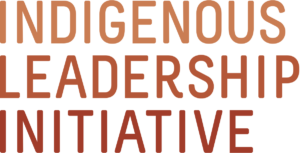Responding to the Salmon Crisis with Indigenous Knowledge & Stewardship
July 10, 2023
By Frank Brown
Along the Pacific Coast, many salmon species are making their summer migration from ocean waters to rivers and streams. In First Nations culture, salmon is a symbol of regeneration and perseverance. In order for salmon to reproduce, they must sacrifice their own life to allow the next generation to prosper. Many creatures in the ecosystem including Bears, Eagles, and humans depend on Salmon for sustenance.
From a creek of origin, a salmon egg hatches into salmon fry, grows into a smolt and goes out to sea where it matures and is ready to reproduce and go back home to the creek of origin where it is imprinted to return. Salmon have always migrated, and as the glaciers melted, they colonised new river systems. In Heiltsuk territory, 7,000 years ago salmon bones have been found at Triquet Island, the location of an ancient village site. According to archeological data, 14,000 years ago in this same place, our ancestors were consuming sea mammals.
We have stories of our ancient practise of transplanting salmon from productive salmon rivers to non-reproducing salmon rivers with gravel and spruce root baskets. We also built salmon weirs and traps. Our people built extensive clam gardens and utilized controlled burning all improving ecosystem services and providing nature-based solutions during times of scarcity. These are important lessons of stewardship and sustainability. A primary lesson of the twin salmon story is to respect salmon that sustain us or run the risk of them not returning. Having twins is a blessing from the Salmon people, and that is why twins lead the salmon dance in the Heiltsuk potlatch ceremonial.
Our old people say salmon were so abundant that we could practically walk across the backs of the salmon across the creek that were loaded with salmon in that time super pods of orca arriving to feed on spring salmon were seen.
This abundance was not by accident but rather by design. Our people cultivated these ecosystem services through the strong relationship with Salmon. Heiltsuk laws, governance, and stewardship systems is based on millennia of observation and accumulated intergenerational knowledge transfer.
These traditions were disrupted by the forces of colonisation. The boom-and-bust cycles of salmon fishing--like furs and timber within Industrial revolution—had a devasting impact. There were over 70 salmon canneries on the Pacific Coast, and because our salmon weirs and traps were outlawed, our people worked in canary boats and operated company boats.
At times, boats dumped scow loads of salmon because it could not be processed in time to prevent spoilage.
This waste and disrespect of Salmon has been heartbreaking for our people. And we continue to see impacts of ongoing imbalance.
Everything is connected—from ocean acidification and warming waters to the decline in salmon, herring, and orcas. Research has tracked the increasing temperatures of marine waters and concluded that the oceans absorb heat equivalent to seven Hiroshima bomb explosions every second.
We thought the resources of the ocean would go on forever but now we know it is finite and facing extreme challenges. We must consider our decisions and implications of our actions.
That’s why Nations along the coast in Canada and Southeast Alaska recently came together to declare an emergency for salmon due to environmental threats. The declaration was made at the 4th Annual Indigenous Leaders Summit in Washington last month in recognition that this is a complex, transboundary crisis.
Ensuring the next generation of salmon and our people prosper requires global action to shift energy systems and reduce carbon emissions. It also includes respecting Indigenous knowledge and stewardship.
First Nations are leading the way to a more sustainable future. Many Nations signed on to the Transboundary salmon crisis declaration call to action in 2019. We are establishing marine protected areas to restore healthy waters. We are asserting our authority over decision-making related to forestry and fisheries. And we are expanding the Coastal Guardian Watchmen programs that monitor and care for the places salmon depend upon. Guardians collect the data that our Nations use to set policies that will help restore salmon and other species.
Our Nations have lived along these waters for millennia. We know what a healthy Pacific Ocean looks like. We know what an abundant salmon run looks like. We are drawing on this knowledge to restore that vibrant ecosystem for Salmon and people.





